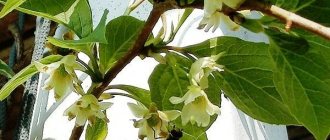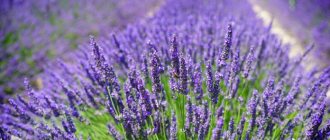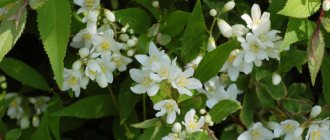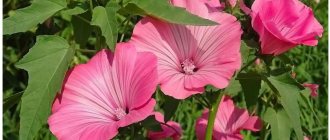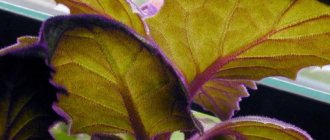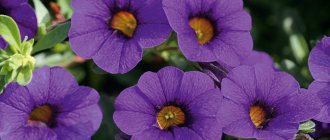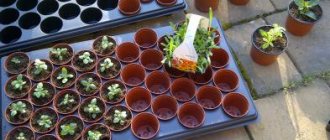Author: Elena N. https://floristics.info/ru/index.php?option=com_contact&view=contact&id=19 Category: Fruit and berry plants Published: August 18, 2017Last edits: November 02, 2020
- Growing conditions
- Growing from seeds
- Medicinal properties
Chinese lemongrass (lat. Schisandra chinensis) is a species of the genus Schisandra chinensis of the Schisandra family, found in the wild on the edges and clearings of coniferous-deciduous and deciduous forests, in narrow valleys of streams and mountain rivers, in old burnt-out areas and clearings in Korea, Japan, China and Russia. territories of the Far East. It grows in groups, forming thickets and rising into the mountains to a height of up to 600 m above sea level. Schisandra chinensis has been cultivated for a very long time: it began to be cultivated for medicinal purposes at least 250 years BC.
Planting and caring for Schisandra chinensis
- Flowering: from the fifth to sixth year of life in late May or early July. Flowering lasts about two weeks.
- Planting: in October or late April-early May.
- Lighting: bright sunlight or partial shade.
- Soil: light, rich in humus, moderately moist and drained.
- Watering: frequent and abundant: 6-7 buckets of water are poured under each bush.
- Fertilizing: from the third season, once every 2-3 weeks, organic fertilizer is applied to the tree trunk circle - a solution of chicken manure or mullein. The tree trunk space is mulched with a layer of humus or leaf compost. In autumn, 20 g of superphosphate and 100 g of wood ash are embedded into the soil under each plant to a depth of 10 cm.
- Garter: the trellis on which this vine is grown is installed immediately after planting. When the vine is located near the wall of the building, it is let down a ladder installed obliquely to the wall.
- Pruning: from the third year after planting, formative pruning begins, which is carried out in the fall, after leaf fall. Unnecessary root shoots are also removed.
- Reproduction: seeds, root cuttings and shoots.
- Pests: not affected.
- Diseases: powdery mildew, ramularia, ascochyta and fusarium.
- Properties: is a valuable medicinal plant.
Read more about growing Schisandra chinensis below.
Growing lemongrass with the expectation of a good harvest
When the lemongrass seedlings sprout, care for them as you would for ordinary seedlings: water, pinch out at the 4-leaf stage. Chinese lemongrass is planted on the site in early June, when there is confidence that there will be no return frosts. Chinese lemongrass is frost-resistant, but in late autumn it is better to cover young plants with breathable material: for example, dry leaves. After two years, they can be transplanted to permanent places.
Growing lemongrass is more successful in loose, fertile soil, in areas where water does not stagnate. A plant that bears fruit has both male and female flowers, but usually its own pollination is not enough, so a “single” Chinese lemongrass produces a small harvest. To increase productivity, you need to plant a group of lemongrass (at least 2-3 plants) on the site.
Botanical description
The plant is a climbing deciduous vine up to 15 m long with a trunk up to 2.5 cm in diameter and shoots covered with brown-brown bark, flaky on old ones, and shiny and smooth on young ones. Both the shoots and leaves of lemongrass have a characteristic citrus aroma, from which the plant gets its name.
The leaves of Schisandra are dense, obovate or elliptical, with a wedge-shaped base and a few and indistinct teeth along the edges. The leaves are connected to the shoots by pink or red petioles up to 3 cm long. In spring and summer, the upper part of the leaf blade is light green, shiny, bare, and the lower part is bluish, with pubescence along the veins. In autumn, the leaves of Schisandra chinensis turn yellow-orange and ocher-yellow.
Growing lemongrass: planting and care in open ground
Fragrant, waxy white dioecious flowers up to 2 cm in diameter on drooping pedicels are located in groups of 3-5 in the leaf axils. The aggregate racemose fruit, up to 10 cm long, consists of edible spherical two-seeded berries of red color and sour taste. The berries of Chinese lemongrass also have a characteristic smell of the plant. The kidney-shaped seeds of Schisandra chinensis remain viable only until spring.
- Follow the rules for pruning and shaping remontant raspberries to get a harvest twice every year!
Flowers and fruits
Schisandra flowers are 1.3–1.8 cm in diameter, creamy white, with a subtle pleasant aroma. Male flowers are slightly smaller than female ones, with white stamens fused along the entire length, so that only the yellowish anthers remain free. After flowering, the male flowers fall off along with the peduncle. The female flowers have a greenish pistil, consisting of numerous carpels. Schisandra is pollinated by small beetles and hymenoptera (bees, wasps, bumblebees, etc.).
Schisandra is not resistant to late spring frosts. The vines bloom around May 25–31. Male flowers bloom 1–2 days earlier than female ones. Plants bloom for one to two weeks.
Schisandra chinensis. Ripe bunches of berries
The fruit is a juicy leaflet, resembles a cylindrical raceme 2–16 cm long and contains (in the conditions of the Non-Black Earth Zone) from 2–4 to 15–25 red berries. The mass of the brush reaches 7–15 g. Each berry contains 1–2 seeds. In 1 g – up to 40–60 seeds. They germinate unevenly.
The fruits ripen in mid-September. The brushes can hang on the vines until the leaves fall (until the first half of October). During the period of full fruiting, up to 2.5 kg of fruits are obtained from one 15–20-year-old plant. In the conditions of the Leningrad region and to the north, lemongrass produces abundant harvests every 2–3 years. This frequency of fruiting is explained primarily by the influence of weather on the formation of flowers (in July-August).
Planting Schisandra chinensis
When to plant
Growing and caring for Schisandra chinensis is carried out not only for medicinal purposes, but also for decorating the site, since the plant has high decorative qualities. In areas with a warm, mild climate, lemongrass is planted in October, and in the middle zone, planting is carried out at the end of April or beginning of May. Professionals recommend planting at least three plants at a distance of 1 m from each other. If you want to grow a vine near the house, step back 1-1.5 m from the wall so that water from the roof does not drip onto the lemongrass.
How to plant
Schisandra prefers light, but humus-rich, moist and well-drained soil. The plant is shade-tolerant, but will develop better in a well-lit place.
Two- to three-year-old seedlings are used as planting material, which, with a shoot height of only 10-15 cm, have a well-developed root system. Before planting, taller shoots of the seedling are shortened to 3 buds, and the roots are trimmed to 20-25 cm.
A planting hole for Schisandra chinensis is dug with a diameter of 60-70 cm and a depth of at least 40 cm. A drainage layer of expanded clay, broken brick or crushed stone 10 cm thick is laid on the bottom, and to fill the hole a soil mixture is prepared from equal parts of humus, leaf compost and turf earth, adding 200 g of superphosphate, half a kilogram of wood ash and mixing thoroughly. Before planting, pour the soil mixture onto the drainage layer.
Dip the roots of the seedling into a clay mash, add 1 liter of mullein to a bucket, and place the plant on a mound so that its root collar is at surface level after planting. Spread the lemongrass roots and fill the hole with prepared fertile soil. Then compact the soil in the tree trunk circle and water it generously, and when the water is absorbed, fill the root hole with humus or peat. Chinese lemongrass seedlings take root very quickly, but it is advisable to initially protect them from bright sun, provide regular watering and evening spraying in dry weather.
How to choose the right seedlings, planting features
The process of selecting lemongrass seedlings should be approached with all responsibility. Choose a healthy two- or three-year-old plant with fairly long roots (at least 20 cm). In addition, the roots should be slightly damp (ideally in the ground), without any damage.
The bark of the seedling should be smooth - this is evidence of a sufficient level of moisture in the plant. In order not to damage the seedlings during transportation, they should be wrapped in a damp cloth and a piece of polyethylene.
If the roots were not too wet at the time of sale, before planting it is recommended to place them in water for 10-12 hours (you can add a special stimulant for better root formation) - this will allow the plant to be saturated with moisture, fully restore all vital processes, and recover from stress caused by transportation and transfer.
It is preferable to plant plants in early spring (when the threat of early frosts, which are destructive for vines, has passed) or in autumn (optimally October and November). Seedlings should be located at some distance from each other (up to 1.5 meters). Planting different varieties of lemongrass allows you to increase the amount of harvest several times.
In order to properly plant lemongrass seedlings, you should follow a certain algorithm:
- Dig a small hole (40*60 cm).
- Line the bottom of the hole with coarse gravel, pebbles or fragments of slate, bricks - for better drainage.
- Fill the hole with a mixture of humus, compost, turf, and additionally add a small amount of ash and superphosphate.
- Plant seedlings in the prepared hole. Please note - after planting, the root collar of the vine should be slightly (about 5 cm) above the soil level.
- Water the plant generously.
Advice: for planting, it is better to use plant seedlings aged 2-3 years - they have a fairly strong root system and excellent viability.
Planting lemongrass is a simple process; the main thing is to choose a suitable place for planting and prepare the soil.
Schisandra, planted in a warm place well protected from gusts of wind, has lush foliage, beautiful fruits and an attractive appearance. It can also be planted along fences, gazebos, and outbuildings.
This plant does not like an abundance of sunlight, so when planting, you should select a place where the lemongrass will be in the shade for part of the daylight hours (for example, in the southern regions, this is the eastern side). Direct sunlight has an unfavorable effect on the plant.
Schisandra chinensis usually bears fruit in the third year after planting, but you can reap the richest harvest only in the sixth year. As soon as the bunches become bright red and the berries are soft and transparent, they can be harvested. The berries can be harvested along with the stalks, which, after drying and crushing, are also used for tea.
Please note that lemongrass berries have a limited shelf life, so processing of lemongrass fruits must be done directly on the day of collection. During processing, it is not recommended to crush the seeds inside the berries - they will give the fruit an unpleasant bitterness. The optimal way to prepare Schisandra chinensis fruits is to dry them (several days in the oven at 60 degrees) - in this form they can be stored for up to two years.
Caring for Schisandra chinensis
Growing conditions
Planting Schisandra chinensis and caring for it is not labor-intensive and will not take up much of your time. The main care measures are watering, loosening the soil, removing weeds, fertilizing, spraying in prolonged dry heat and pruning.
During the growing season, lemongrass is watered frequently and abundantly: 6-7 buckets of water are poured under the plant at a time. The next day after moisture or rain, you need to loosen the soil around the vine and remove weeds. Do not neglect evening spraying of Chinese lemongrass in the heat. Young vines especially need this procedure. To prevent the rapid evaporation of moisture from the soil, it is better to always keep the tree trunk under mulch made of organic material.
They begin to feed Chinese lemongrass from the third year of life: during spring and summer, a solution of organic fertilizers - cow (1:10) or chicken (1:20) manure - is added to the soil once every two to three weeks. A good result is obtained by mulching the trunk circle of Schisandra chinensis with humus or leaf compost. After leaf fall, 100 g of wood ash and 20 g of superphosphate are added under each bush, followed by embedding to a depth of about 10 cm with mandatory subsequent watering of the soil in the tree trunk circle.
During the flowering period, fruit-bearing vines are fed with Nitrophoska at the rate of 50 g per m², and after flowering, a bucket of a solution of fermented mullein or bird droppings is poured under the plant. In autumn, 60 g of superphosphate and 30-40 g of potassium sulfate are scattered under the bushes, and once every 2-3 years, compost is poured under each plant to a depth of 6-8 cm at the rate of 4-5 kg per m².
Schisandra chinensis, since it is a vine, is grown on a trellis, which is installed in the year the plant is planted. This arrangement of branches and shoots allows the sun's rays to better illuminate the plant, and this contributes to the formation of larger fruits and an increase in yield. If you grow lemongrass without support, it is unlikely to bear fruit. The trellis is made from pillars of such a height that after digging to a depth of 60 cm they rise above the ground by 2-2.5 m. The distance between the pillars is maintained at about 3 m, and they are connected to each other by three rows of horizontal wire guides, the lower of which is stretched by height of 50 cm from the ground, and the next ones every 70-100 cm. In the first year, the regrown shoots are tied to the lower guide, and in subsequent years - to those located above. The shoots are secured to the support with a fan. For the winter, Chinese lemongrass is not removed from the trellis.
If you plant a vine near the house, then you can use a ladder installed at an angle as a support.
They begin to prune lemongrass in the third year after planting, when the development of its root system gives way to increased shoot growth. Not only the decorative appearance of Schisandra chinensis, but also the quality of its fruiting depends on proper pruning. During the first formative pruning, 3 to 6 of the strongest and correctly positioned shoots are left on the bush - the future skeleton of the plant, and the remaining shoots are cut out at ground level. In the future, pruning of Schisandra chinensis is carried out twice a year: in autumn and summer. In the fall, after all the leaves have fallen from the plant, cut out weak, diseased, improperly growing and dried shoots that formed over the summer. The part of the vine that has been actively bearing fruit for the last three years should also be removed. This is done so that young shoots of the vine can develop and produce a harvest.
In summer, lemongrass is pruned only if the plant has formed too many young shoots. Professionals advise cutting branches 10-12 buds from the edge. In addition, it is necessary to combat root shoots annually, as well as regularly replace old skeletal branches with new strong shoots from the basal shoots.
- Winter shelter for pomegranates, persimmons and figs - is it possible to transplant them into containers for the winter?
Pests and diseases
Schisandra has good immunity and, subject to agricultural practices and good care, is very rarely affected by diseases. It is also resistant to pests. However, if you receive infected planting material, you need to be prepared to deal with diseases. Most often, lemongrass is affected by spotting, powdery mildew and Fusarium wilt.
Among the spots, Schisandra chinensis is affected by ramularia and ascochyta blight. Brown blurry spots and edges on the leaves are the main signs of these diseases. Black dots called fungal pycnidia may appear on the underside of the leaf blade. Diseased leaves should be removed and burned, and the vine should be treated with one percent Bordeaux mixture or another copper-based fungicide.
Powdery mildew covers the leaves and stems of the plant with a sloppy whitish coating. As a result of the development of the disease, lemongrass leaves fall off prematurely. Powdery mildew also affects shoots, buds and roots of Schisandra chinensis. If its symptoms are detected, all affected leaves should be removed, and the plant should be treated with sulfur powder and soda ash solution until the vine recovers. Intervals between treatments are 7-10 days.
Fusarium can affect Schisandra at any age, but more often this problem happens to young plants. The cause of the disease is usually infection of planting material. Wilting is manifested by the formation of rotting areas on the root collar and roots of the plant. The stems of lemongrass darken, become thinner, the leaves turn yellow and fall off, and the vine dies from blockage of blood vessels. It is impossible to cure Chinese Schisandra from Fusarium, but it is quite possible to prevent the development of the disease if the seeds and seedlings are treated with a fungicide solution and the soil with Trichodermin before sowing and planting. If the plant does become sick, it will have to be removed and burned, and healthy bushes, before they become infected, should be treated with a solution of potassium permanganate.
Schisandra chinensis in the Moscow region
Schisandra chinensis has long been common in the Moscow region, as is Schisandra chinensis in the Urals, since the plant normally tolerates even harsh winters down to -35 ºC, and the decorative and medicinal qualities of this crop, as well as its ease of care, make the Far Eastern liana increasingly popular among gardeners. lovers. In the middle zone, Chinese lemongrass does not need to be laid on the ground or covered for the winter; only young plants need protection from the cold, and then only in the first winter. But in the conditions of Siberian frosts, the lashes are carefully removed from the trellis, placed on a bed of spruce branches or straw and generously sprinkled on top with leaves, straw or covered with spruce branches.
Choosing a method of propagation and cultivation
If you look at the berries, they are characterized as a multiberry, since each cluster grows from a single flower. The plant is unpretentious, grows in partial shade, in loose soil with a moderate amount of nutrients, and can withstand frosts down to -50°C.
Schisandra chinensis can be propagated at home in several ways:
- cuttings - used when there is a plant from which cuttings can be taken;
- seeds - a reliable but long-term method, since the harvest can be obtained in 4–5 years;
- shoots are the most effective method;
- root suckers - used when there is an adult plant and there is a desire to get numerous shoots;
- division of the mother bush - used when replanting;
- layering is an effective, low-cost method used when propagating an existing bush.
When planting schisandra seedlings, sometimes a problem arises that the plant does not bear fruit. The plant can have 4 types of flower buds: male, female, mixed and alternating every other year. And for berries you need to have several plants, so seed propagation gives the best result. As a result of propagation by seeds on one plant there will be male and female buds, but it does not always transmit the maternal forms.
Propagation of Schisandra chinensis
Schisandra chinensis propagates by seeds, shoots and root cuttings, however, all the properties of the mother plant are preserved only during vegetative propagation.
Growing from seeds
The easiest way is to sow lemongrass seeds in prepared beds before winter, immediately after collecting them. You can sow in the spring, but in this case the seeds are stratified: they are kept in the bottom drawer of the refrigerator for two months. There is a very effective way to prepare seeds for sowing, developed by professionals: they are stored in fruits until January, then washed from the pulp, put in a nylon stocking and placed under constantly flowing water. At home, seeds in a stocking can be kept in the toilet flush tank so that they end up in fresh, clean water after each flush. After four days, the seeds are squeezed out, placed directly in a stocking in a container with wet calcined sand and kept for a month at a temperature of 18-20 ºC, after which the container with the seeds is buried in the snow for stratification. After a month, the seeds are brought into a room with a temperature of 10 ºC and observed: after a week or two they begin to crack, and then they can be sown to a depth of 5 mm in boxes with a mixture of sand and humus in equal parts. The crops are covered with paper and watered daily. Shoots with large cotyledons, similar to cucumber sprouts, will appear in 1-2 weeks. Caring for seedlings consists of protection from direct sunlight, watering and 1-2 treatments with a weak solution of potassium permanganate to prevent blackleg and other fungal diseases. At the stage of development of 3-4 true leaves, the seedlings are planted in larger boxes according to a 5x5 cm pattern, and in early June, after the warmth has finally set in, the hardened Schisandra chinensis seedlings can be planted in open ground in partial shade. The feeding area of one plant is 10x10 cm². Protect the seedlings from too much sun, and with the onset of autumn, cover them with spruce branches or a thick layer of foliage. Schisandra chinensis is planted in a permanent place from seeds at two to three years of age.
Reproduction by shoots
The most effective method of propagation is planting shoots. The liana is literally surrounded by many shoots on which dormant buds are located. The offspring are separated from the bush and immediately transplanted to a permanent place. In the southern regions, this can be done before the start of sap flow and after leaf fall, and in the northern regions - only in early spring.
Propagation of lemongrass by root cuttings
From the rhizome, cut pieces of roots from 5 to 10 cm long with several dormant buds and, to prevent the overgrown roots from drying out, immediately sprinkle the pieces with damp soil or cover them with a wet napkin. Then the root cuttings are planted in a garden bed or in a cold greenhouse according to a 10x10 pattern and covered with a layer of fertile soil 2-3 cm thick. Planting care involves regular watering. In the spring of next year, the cuttings that have sprouted are planted in a permanent place.
Growing lemongrass: seed stratification
You can do this. In January, extract lemongrass seeds from the fruits and wash them from the pulp. Soak for 4-5 days in warm water, changing it every day. Then place the lemongrass seeds in a cloth and bury them in a container (box, pot) with wet sand. Place the container in a warm but not hot place (+18-20 degrees). This is the “warm” part of stratification.
After 1 month, the container containing the lemongrass seeds should be buried in the snow. Place a higher ridge of snow on top to prevent the seeds from freezing. This “cold” part of stratification also lasts 1 month. If there are only a few seeds, you can wrap them in a damp cloth and then in plastic, and keep them in the refrigerator for 30 days, sometimes removing the bag and moistening the cloth.
After this, the container with the seeds or lemongrass seeds in a plastic bag is brought into a cool (+8-10 degrees) room (veranda, balcony, etc.). After ten days, their shell begins to crack. All that remains is to sow Chinese lemongrass in a box with loose soil (with the addition of humus and sand).
Varieties of Schisandra chinensis
Unfortunately, there are not so many varieties of Chinese lemongrass. Currently, the most famous of them are:
- Garden-1 is a self-pollinating, highly productive winter-hardy variety, the branches of which reach a length of 10 m. The fruits of Schisandra chinensis of this variety consist of spherical juicy and sour red berries with the smell of lemon, collected in racemose fruits up to 10 cm long;
- Mountain -hardy and productive variety of medium ripening, relatively resistant to diseases and pests. The fruit up to 9 cm long and weighing up to 13 g consists of 15-17 dark red berries with a bitter-sour taste;
- Volgar is a winter-hardy, drought-resistant, late-ripening lemongrass that is practically not affected by diseases and pests and has a universal purpose. It is a monoecious liana with fruits weighing up to 7.3 g, consisting of 14-15 round red fruits of a sour taste with a resinous aroma;
- Pervonets is a frost-resistant, disease- and pest-resistant medium-ripening variety of Russian selection with carmine-red fruits with juicy bright red flesh, a specific sour taste and lemon aroma;
- Myth is a hybrid variety of unknown origin with medium-length fruits, consisting of 15 red fruits with a pleasant sour taste.
Cuttings
Propagation by cuttings must be carried out in mid-June before or during flowering. To do this, shoots that are green-brown in color and not lignified are cut off. The cuttings should be 4–8 cm long and have 3–4 buds. The upper cut is straight, the lower cut is oblique. The distance from the cut to the nearest bud is about 5 mm. Treating cuttings with a growth stimulator will help rooting. As a stimulant, you can use Heteroauxin. It is diluted with water in a ratio of 1:10.
Cuttings of Schisandra chinensis are carried out in stages:
- Prepare the greenhouse for planting.
- Cut cuttings of the required length from green shoots.
- They are treated with a growth stimulator throughout the day.
- They plant and water.
- Cover the planting with film or glass.
For rooting, cuttings are planted in a greenhouse . The soil for the greenhouse is light, fertile, covered with a layer of sand 3–4 cm thick. Planting is carried out in rows at a distance of 5 cm from each other in an inclined form. Planting depth is 2–3 cm to the second bud from the bottom. The planting is watered and the greenhouse is covered with film or glass.
Ventilation and spraying of cuttings with water must be carried out regularly throughout the summer . It is also necessary to ensure that the soil does not dry out. For the winter, it is better to hide the cuttings from freezing in the basement. To do this, you need to dig them up along with a lump of earth and plant them in a box. It should be planted in a permanent place in the spring. If 50% of the cuttings have taken root, this is a good result.
Properties of Schisandra chinensis - harm and benefits
Medicinal properties
For medicinal purposes, the fruits and seeds of the plant are mostly used. The fruits of Schisandra chinensis contain resinous substances, schisandrin, potassium, organic acids (malic, citric and tartaric), vitamins, mineral salts, trace elements copper, iodine, selenium, manganese, iron, zinc, essential oil.
The beneficial properties of this species were known back in Ancient China and the plant was actively used in pharmacology. Today, Schisandra chinensis is grown on an industrial scale. The berries of the plant have the ability to tone and stimulate the nervous system, which is why Nanai hunters take a handful of dried fruits with them when setting off on their journey. And not so long ago, tests involving military personnel and athletes showed that Schisandra has the property of relieving fatigue during intense physical exertion: just 2-5 berries of Schisandra chinensis have a stronger effect than phenamine or cola, but, unlike these stimulants, they do not give negative side effects. Schisandra chinensis berries are also indicated for those who engage in intense mental work, and it is very important that their tonic effect does not deplete nerve cells.
Schisandra preparations increase the body's resistance to diseases and adverse environmental influences, stimulate the respiratory system and the functioning of the heart muscle. They are often prescribed for the complex treatment of diseases caused by asthenic and depressive states. It is indicative that as a result of taking Schisandra chinensis preparations there were never any signs of overexcitation.
Fresh lemongrass berry juice can inhibit the development of many pathogens. The high effectiveness of treating chronic gastritis with the seeds of the plant has been proven: even a single dose of powder from the seeds of Schisandra chinensis led to the normalization of gastric acidity in patients suffering from either too high or low levels.
- Mulberry cuttings in summer: which branches to choose, how to root cuttings
To summarize, we can say that Chinese lemongrass has a positive effect:
- with a general loss of strength;
- with high mental or physical stress;
- with low blood pressure;
- for bronchitis, asthma and tuberculosis;
- with anemia;
- with sexual weakness;
- for diseases of the stomach, kidneys and liver.
Contraindications
Schisandra chinensis, like other medicinal plants, has its own contraindications. You cannot eat its berries, drink its juice or take plant preparations for the following conditions and pathologies:
- vegetative-vascular dystonia;
- allergy;
- epilepsy;
- pregnancy;
- increased excitability;
- arterial hypertension;
- insomnia;
- arachnoiditis;
- increased intracranial pressure;
- acute infectious disease.
How to prune lemongrass correctly
In the third year of planting, the shrub also needs pruning. Only 6 growing stems are left, and the rest of the growth is cut out. Pruning is carried out in the fall, after the leaves have fallen from the plant. In winter, the procedure is prohibited due to intense sap flow. If the bushes are too thick, you should not wait until autumn; the pruning procedure is possible in the spring. In addition to young growth, dry, injured and damaged by diseases or pests vines are removed.
Important. Schisandra is difficult to transplant. Agronomists do not recommend propagating it by division. It’s easier to buy seedlings at a nursery.
What diseases is Schisandra susceptible to?
This crop is one of the few that can boast resistance to pests. Due to the specific aroma of the leaves and flowers, pests avoid lemongrass, so spraying with insecticides is not necessary. But the culture is susceptible to diseases, and among the most common are:
- leaf spot – treatment – spraying with copper preparations;
- phyllostictosis - also overcome with copper preparations;
- ascochytasis - treated with Bordeaux mixture;
- ramulariasis – treatment with fungicidal preparations is necessary;
- powdery mildew - copper preparations are used;
- Fusarium - treatment with potassium manganese solution.
Beneficial features
The fruits contain tartaric, malic, succinic, citric acids, vitamins C and E, and catechins. Also extremely rich in mineral salts, as well as potassium, calcium, phosphorus, manganese, silver and zinc.
Schisandra accumulates a special substance, schisandrin , which has a stimulating effect on the human cardiovascular and central systems. Schisandrin is found in all parts of the plant.
The pharmacological dose of schisandrin is contained in 50 grams of fresh fruit. In China, the berries of this vine are called “fruits of five tastes.” Of course, their skin is both sweet and salty, the juice is sour, and the seeds are hot.
Schisandra is contraindicated:
- Hypertensive patients
- Pregnant
- Children under 12 years old
- Nursing mothers
- People with cardiac problems
- You cannot eat lemongrass berries after 18:00 - insomnia is guaranteed.
In moderate doses (no more than 50 grams of berries at a time) and after consulting doctors, the use of Schisandra berries is indicated for stimulating and toning the nervous system.
Medicines based on Schisandra chinensis sharpen vision, simplify the eyes' adaptation to darkness, activate the gastrointestinal tract, and lower blood sugar levels. Dogwood also has similar properties.
By the way, lemongrass is not the only vine that grows well in the middle zone. The vines of the new frost-resistant kiwi variety bear fruit well in open ground.
Did you like the article?
Support us by reposting! Share:
Schisandra in the Urals and Moscow region
For Chinese Schisandra, planting and care in the Urals has long become commonplace, since the plant easily tolerates frosty winters down to -35°C. But in the northern region there may be more severe frosts, so it is better to build a shelter for the vine for the winter. To do this, the lashes are removed from the support and carefully placed on a pillow of straw or spruce branches. The shoots are sprinkled with dry leaves on top and also covered with spruce branches.
In central Russia, lemongrass is not removed from its support for the winter, but is left in its usual position. Only young plants in their first year of life require shelter. In the Moscow region, lemongrass can be found quite often. The culture attracts gardeners with its high decorative qualities and medicinal properties. Another advantage of the woody vine is its unpretentiousness.
Choosing a landing site
Chinese lemongrass is native to the subtropics. The main place where it grows in the wild is the Far Eastern region, especially the Amur region, Khabarovsk and Primorsky territories; it is less common on Sakhalin and the islands of the Kuril ridge. Schisandra owes its cultivation to gardeners, who fell in love with it for its striking beauty, and the easy care and unpretentiousness of the vine added to its merits in the eyes of the owners of summer cottages. It is grown in the Baltic states, Ukraine, Belarus, in the middle zone and in the south of Russia, in Western Siberia.
In the garden, the success of growing vines is directly related to the competent choice of site for planting it. If it is done correctly, the plant will not only be highly decorative, but will also bring a good harvest of healthy berries. It is better not to plant lemongrass in the shade; it prefers sunny and warm places. Drafts and dry hot winds have equally detrimental effects on vines, so the area must be protected from them. The plant develops best near the southern walls of buildings. It can be planted on the western or eastern side. In this case, the lemongrass will have enough light, which will fall on it for half a day.
Growing crops requires thorough soil preparation. Abundant fruiting from vines can only be expected in loose, highly nutritious soil with a high content of humus and with a neutral or as close to it reaction as possible. Good drainage is very important for them. The plant is demanding on the structure and quality of the soil. Prepare a suitable substrate for it according to the following rules:
- If the soil on the site is characterized by high acidity for lemongrass, it is neutralized by adding lime.
- Clay is added to peaty and sandy soil and the mixture is enriched with organic fertilizers.
- If the soil in the garden is heavy loam, which does not allow water and air to penetrate well to the roots of the vines, it is prepared for their cultivation by adding sand and humus.

